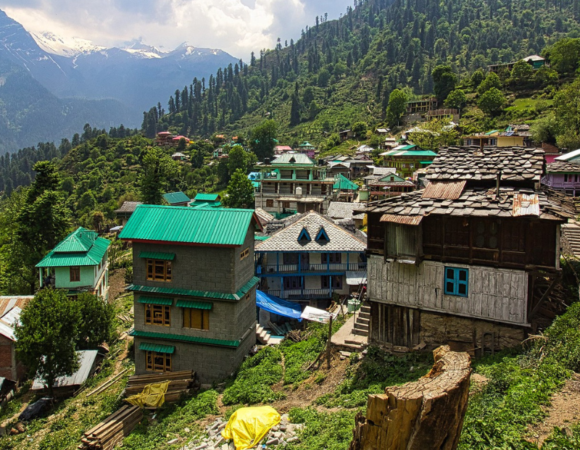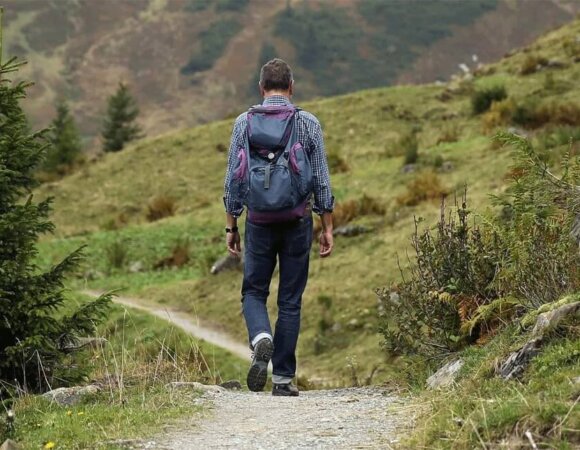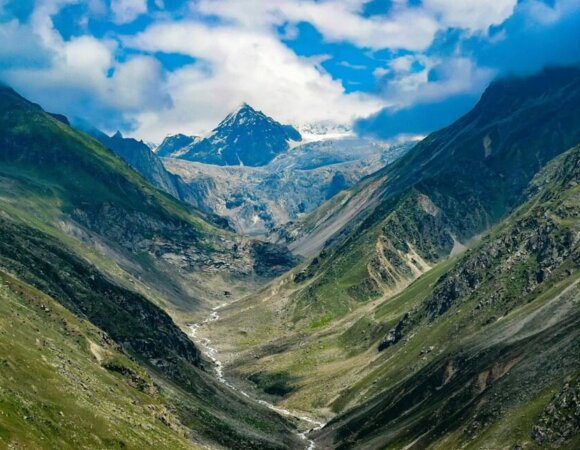HAPE and HACE – Understanding the Dangers of High Altitude Trekking
Table of Contents
ToggleHigh Altitude Pulmonary Edema (HAPE) and High Altitude Cerebral Edema (HACE) are two potentially life-threatening conditions that can occur when individuals ascend to high altitudes. These conditions are commonly associated with mountain climbers, hikers, and travelers who venture to high altitude destinations.

Both HAPE and HACE are caused by exposure to high altitudes where there is a decrease in air pressure and a decrease in the amount of oxygen that is available. As the altitude increases, the air pressure decreases, making it more difficult to breathe and causing a decrease in the amount of oxygen that is available to the body.
In the case of HAPE, the decreased oxygen levels can cause the blood vessels in the lungs to constrict, leading to an increase in pressure in the lungs and fluid accumulation. In the case of HACE, the decreased oxygen levels can cause the brain to swell, leading to neurological symptoms such as confusion and loss of coordination.
It is important to note that not everyone who ascends to high altitudes will develop HAPE or HACE, and the risk is increased in those who ascend too quickly or without proper acclimatization.
High altitude refers to elevations above sea level of approximately 8,000 to 12,000 feet (2,400 to 3,700 meters) and above. As the altitude increases, the air pressure and oxygen levels decrease, making it more difficult for the body to function properly.
Some common symptoms of high altitude include headache, nausea, dizziness, fatigue, shortness of breath, and difficulty sleeping. These symptoms can range from mild to severe and can be life-threatening if left untreated.
Proper acclimatization is essential when ascending to high altitudes to allow the body to adjust gradually to the lower oxygen levels. This can be done by ascending slowly, taking regular rest breaks, and staying hydrated. If symptoms of altitude sickness do occur, it is important to descend to a lower altitude as soon as possible to receive proper medical attention.
High altitude can be a unique and rewarding experience for outdoor enthusiasts, but it is important to be aware of the potential risks and take appropriate precautions to ensure a safe and enjoyable trip.
HAPE:

HAPE is a condition that occurs when fluid accumulates in the lungs due to high altitude exposure. As individuals ascend to high altitudes, the air pressure decreases, and the air becomes thinner. This results in a decrease in the amount of oxygen in the blood. In response to this, the body tries to compensate by increasing the heart rate and breathing rate.
Research: HAPE
However, this increased workload on the heart and lungs can cause fluid to leak from the blood vessels into the air sacs of the lungs. This fluid accumulation can lead to difficulty breathing, coughing, and chest tightness.
Symptoms of HAPE:
The symptoms of HAPE can include shortness of breath, cough, chest tightness, fatigue, weakness, and a rapid heartbeat. If left untreated, HAPE can lead to severe breathing difficulty, blue lips or fingernails, and a bluish hue to the skin.
HACE:

HACE is a condition that occurs when the brain swells due to high altitude exposure. As individuals ascend to high altitudes, the decreased air pressure can cause a decrease in the amount of oxygen that reaches the brain. This can lead to brain swelling, which can cause a range of symptoms.
Symptoms of HACE:
The symptoms of HACE can include headache, dizziness, confusion, disorientation, difficulty walking, and loss of coordination. As the condition worsens, individuals may experience seizures, coma, and even death.
Treatment for HAPE and HACE:
The treatment for HAPE and HACE involves descending to a lower altitude as soon as possible. Supplemental oxygen may be administered to help relieve the symptoms, and in severe cases, hospitalization may be necessary. In addition to immediate treatment, prevention is also key. Proper acclimatization and ascent planning can help reduce the risk of developing these conditions. This includes gradually ascending to higher altitudes, staying well hydrated, and avoiding alcohol and sedatives.
Read more: Beas Kund Trek
In conclusion, HAPE and HACE are two serious conditions that can occur when individuals ascend to high altitudes. It is important to be aware of the symptoms of these conditions and to take the necessary precautions to prevent them from occurring. If you are planning to travel to high altitude destinations, it is recommended that you consult with a healthcare professional to discuss your risk and develop a plan to ensure a safe and enjoyable trip.
Frequently Asked Question FAQ’s for Hape and Hace
What is HAPE?
High Altitude Pulmonary Edema (HAPE) is a condition that occurs when fluid accumulates in the lungs due to high altitude exposure.
What is HACE?
High Altitude Cerebral Edema (HACE) is a condition that occurs when the brain swells due to high altitude exposure.
What causes HAPE and HACE?
Both conditions are caused by exposure to high altitudes where there is a decrease in air pressure and a decrease in the amount of oxygen that is available.
What are the symptoms of HAPE?
Symptoms of HAPE can include shortness of breath, cough, chest tightness, fatigue, weakness, and a rapid heartbeat.
What are the symptoms of HACE?
Symptoms of HACE can include headache, dizziness, confusion, disorientation, difficulty walking, and loss of coordination.
Who is at risk for HAPE and HACE?
Anyone can develop HAPE and HACE, but those who ascend to high altitudes too quickly or without proper acclimatization are at a higher risk.
How are HAPE and HACE diagnosed?
Diagnosis is typically made through a physical exam, including listening to the lungs or checking for neurological symptoms, and medical history.
Can HAPE and HACE be prevented?
Proper acclimatization, gradual ascent to higher altitudes, and staying well hydrated can help reduce the risk of developing HAPE and HACE.
How are HAPE and HACE treated?
The treatment for both conditions involves descending to a lower altitude as soon as possible. Supplemental oxygen may be administered to help relieve symptoms, and in severe cases, hospitalization may be necessary.
Can HAPE and HACE be fatal?
Yes, both conditions can be fatal if left untreated.
How long does it take for symptoms of HAPE and HACE to appear?
Symptoms can appear within a few hours to a few days of exposure to high altitude.
Can medication be used to treat HAPE and HACE?
Certain medications, such as dexamethasone, can be used to help treat HACE. However, there are no medications specifically approved for treating HAPE.
Can HAPE and HACE occur in lowland areas?
HAPE and HACE are typically associated with high altitude exposure, but they can occur in lowland areas as well.
Can HAPE and HACE occur in children?
Yes, children are also at risk for developing HAPE and HACE.
Can HAPE and HACE occur during exercise or physical activity?
Yes, both conditions can occur during exercise or physical activity at high altitudes. It is important to properly acclimate to the altitude and gradually increase physical activity.







